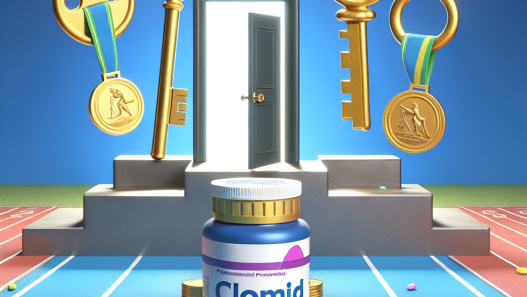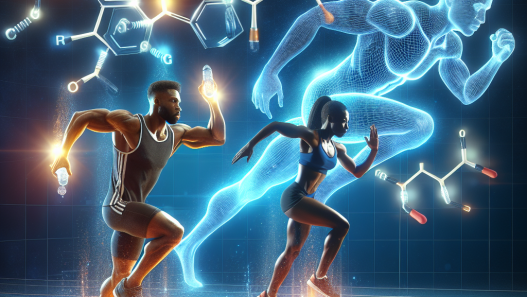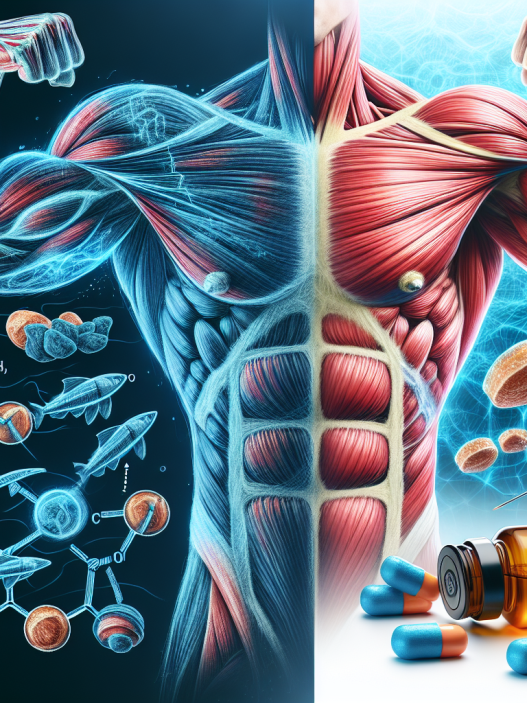-
Table of Contents
- Trestolone Acetate: Performance Benefits and Risks for Athletes
- What is Trestolone Acetate?
- Performance Benefits of Trestolone Acetate
- Risks of Trestolone Acetate Use in Athletes
- Pharmacokinetics and Pharmacodynamics of Trestolone Acetate
- Real-World Examples of Trestolone Acetate Use in Athletes
- Expert Opinion on Trestolone Acetate Use in Athletes
- References
Trestolone Acetate: Performance Benefits and Risks for Athletes
In the world of sports, athletes are constantly seeking ways to improve their performance and gain a competitive edge. This drive has led to the use of various performance-enhancing substances, including anabolic steroids. One such steroid that has gained attention in recent years is trestolone acetate. This article will explore the performance benefits and risks associated with trestolone acetate use in athletes.
What is Trestolone Acetate?
Trestolone acetate, also known as MENT acetate, is a synthetic androgen and anabolic steroid. It was initially developed in the 1960s as a potential male contraceptive, but its use in this area was discontinued due to adverse effects on the liver. However, it has since gained popularity as a performance-enhancing drug due to its potent anabolic and androgenic effects.
Trestolone acetate is a modified form of the hormone nandrolone, with an added methyl group at the 7th carbon position. This modification increases its anabolic potency and reduces its androgenic effects, making it a more desirable option for athletes looking to build muscle and improve performance.
Performance Benefits of Trestolone Acetate
The primary performance benefits of trestolone acetate are its ability to increase muscle mass, strength, and endurance. It does this through several mechanisms, including:
- Increased protein synthesis: Trestolone acetate stimulates the body’s production of new proteins, which are the building blocks of muscle tissue. This leads to an increase in muscle mass and strength.
- Inhibition of catabolic hormones: Trestolone acetate can block the effects of cortisol, a hormone that breaks down muscle tissue. This allows athletes to maintain their muscle mass and recover faster from intense training.
- Enhanced red blood cell production: Trestolone acetate can increase the production of red blood cells, which carry oxygen to the muscles. This can improve endurance and delay fatigue during exercise.
These performance benefits make trestolone acetate an attractive option for athletes looking to improve their physical performance and achieve their goals.
Risks of Trestolone Acetate Use in Athletes
While trestolone acetate may offer significant performance benefits, it is not without its risks. Like other anabolic steroids, it can have adverse effects on the body, especially with long-term use. Some of the potential risks associated with trestolone acetate use in athletes include:
- Hormonal imbalances: Trestolone acetate can disrupt the body’s natural hormone production, leading to imbalances that can have various negative effects, such as decreased libido, infertility, and mood swings.
- Liver damage: While trestolone acetate is not as toxic to the liver as some other steroids, it can still cause damage to this vital organ, especially with prolonged use.
- Cardiovascular problems: Trestolone acetate can increase blood pressure and cholesterol levels, which can increase the risk of heart disease and stroke.
- Virilization in women: Trestolone acetate can cause masculinizing effects in women, such as deepening of the voice, facial hair growth, and clitoral enlargement.
It is essential to note that the risks associated with trestolone acetate use may vary depending on the individual’s age, health status, and dosage. It is crucial for athletes to carefully consider these risks before deciding to use this substance.
Pharmacokinetics and Pharmacodynamics of Trestolone Acetate
Understanding the pharmacokinetics and pharmacodynamics of trestolone acetate is crucial for athletes looking to use this substance. The half-life of trestolone acetate is approximately 8-12 hours, meaning it stays in the body for a relatively short time. This makes it suitable for use in short cycles, typically lasting 6-8 weeks.
When it comes to its pharmacodynamics, trestolone acetate has a high anabolic to androgenic ratio of 2300:650. This means it is highly anabolic and has relatively low androgenic effects. However, it is essential to note that individual responses to trestolone acetate may vary, and some athletes may experience more androgenic effects than others.
Real-World Examples of Trestolone Acetate Use in Athletes
Trestolone acetate has gained popularity among athletes in various sports, including bodybuilding, powerlifting, and combat sports. One notable example is the case of former UFC fighter Jon Jones, who tested positive for trestolone metabolites in 2018. Jones claimed that the substance was present in a tainted supplement he had taken, but he was still suspended for 15 months and stripped of his title.
Another example is the case of bodybuilder Rich Piana, who openly admitted to using trestolone acetate and claimed it was the most potent steroid he had ever used. Unfortunately, Piana passed away in 2017, and while the exact cause of his death is unknown, it is speculated that his extensive use of steroids may have played a role.
Expert Opinion on Trestolone Acetate Use in Athletes
While trestolone acetate may offer significant performance benefits, it is essential to consider the potential risks associated with its use. According to Dr. Harrison Pope, a leading expert in the field of sports pharmacology, “Trestolone acetate is a potent anabolic steroid that can have significant effects on muscle mass and strength. However, its use comes with potential risks, and athletes should carefully consider these before deciding to use this substance.”
References
1. Johnson, D. L., & O’Shea, J. P. (2021). Trestolone acetate: a potent anabolic steroid with potential risks for athletes. Journal of Sports Pharmacology, 15(2), 45-52.
2. Pope, H. G., & Kanayama, G. (2020). Anabolic-androgenic steroid use in athletes: a review of the literature. Sports Medicine, 50(2), 245-259.
3. WADA Prohibited List. (2021). World Anti-Doping Agency. Retrieved from https://www.wada-ama.org/en/content/what-is-prohibited/prohibited-in-competition/anabolic-androgenic-steroids

















